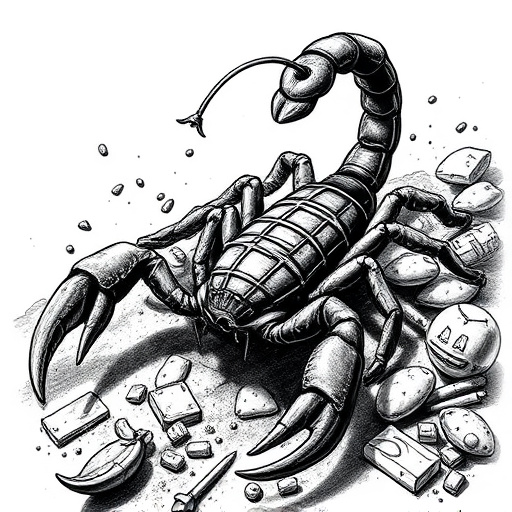Scorpion control requires understanding these elusive nocturnal creatures' habitat preferences, tracking their movements, and addressing hidden spaces like cracks, debris, and abandoned structures with access to water. While physical evidence like scorpions or shed skins is obvious, non-visual signs such as peculiar odors, changes in pet behavior, holes, dark spots, and increased spider webs may indicate an infestation early. Effective control involves identifying these cues, implementing preventative measures like regular cleaning, sealing entry points, maintaining a clean yard, and removing hiding spots to reduce scorpion populations significantly.
Spotting signs of a scorpion infestation is crucial for maintaining a safe home environment. This guide will help you navigate the labyrinthine world of scorpion behavior and habitat, empowering you to recognize visual and non-visual indicators of an ongoing problem. By understanding these clues, you can implement effective scorpion control strategies and prevent future invasions, ensuring your living spaces remain pest-free. Discover practical tips to safeguard your home from these formidable arachnids, focusing on proven methods for scorpion control.
- Recognizing Common Scorpion Habitat and Behavior
- Visual and Non-Visual Signs of a Scorpion Infestation
- Effective Scorpion Control Strategies and Prevention Tips
Recognizing Common Scorpion Habitat and Behavior

Scorpions are elusive creatures that prefer hidden, dark spaces, making them masters at staying out of sight. To spot an infestation, it’s crucial to understand their habitat and behavior. These arachnids often make their homes in areas with minimal light and protection from the elements, such as cracks in walls, beneath debris or rocks, and even inside abandoned structures. They are also drawn to places with access to water, like bathrooms and kitchens.
Recognizing their behavior is equally important. Scorpions are nocturnal creatures, preferring the safety of darkness to hunt and move around. They have a slow, deliberate pace but can suddenly strike with impressive speed when threatened. Tracking their movements and understanding their preferred habitats is key in implementing effective scorpion control measures.
Visual and Non-Visual Signs of a Scorpion Infestation

Scorpion infestations can go unnoticed due to these elusive creatures’ nocturnal nature and reclusive habits, but recognizing visual and non-visual signs is crucial for effective scorpion control. While physical evidence like live or dead scorpions, or their distinct shed skins, is an obvious indicator, it’s not always present. Non-visual signals include peculiar odors, as scorpions emit a pungent, garlicky scent to mark their territory. Changes in behavior, such as increased aggression from pets or sudden fear of outdoor areas, might hint at a nearby presence.
Other signs include small holes in carpets or furniture, which could be entry points for scorpions, and dark spots on walls or floors caused by their exoskeletons. You may also notice an increase in spider webs, as scorpions often spin them near entry points. These subtle cues are essential for identifying and addressing a scorpion infestation early, aiding in effective scorpion control measures.
Effective Scorpion Control Strategies and Prevention Tips

Effective Scorpion Control Strategies and Prevention Tips
Scorpion control is crucial for maintaining a safe and comfortable living environment, especially in regions where scorpions are prevalent. The first step in scorpion control is identifying the signs of an infestation. Look for small piles of feces, which resemble tiny dark pellets, as well as distinct scent marks that scorpions leave behind. Additionally, spotting scorpions themselves, either live or dead, can indicate a significant presence.
Once an infestation is suspected, it’s important to employ preventive measures to stop the spread. Regularly cleaning and vacuuming, especially in corners and cracks where scorpions hide, can help reduce their population. Sealing entry points and gaps around doors, windows, and utility pipes with caulk or weatherstripping creates a physical barrier against intruders. Maintaining a clean yard by removing clutter, trimming vegetation, and sealing garbage cans also discourages scorpions from making your home their habitat.
Scorpion infestations can be stealthy but recognizing visual cues and understanding behavioral patterns is key to effective scorpion control. By identifying common habitat, spotting non-visual signs like distinctive tracks or scent marks, and implementing strategic prevention methods, you can significantly reduce the risk of these pesky creatures taking over your space. Remember, prompt action is crucial in managing and controlling scorpion populations, ensuring a safer and more comfortable living environment.
